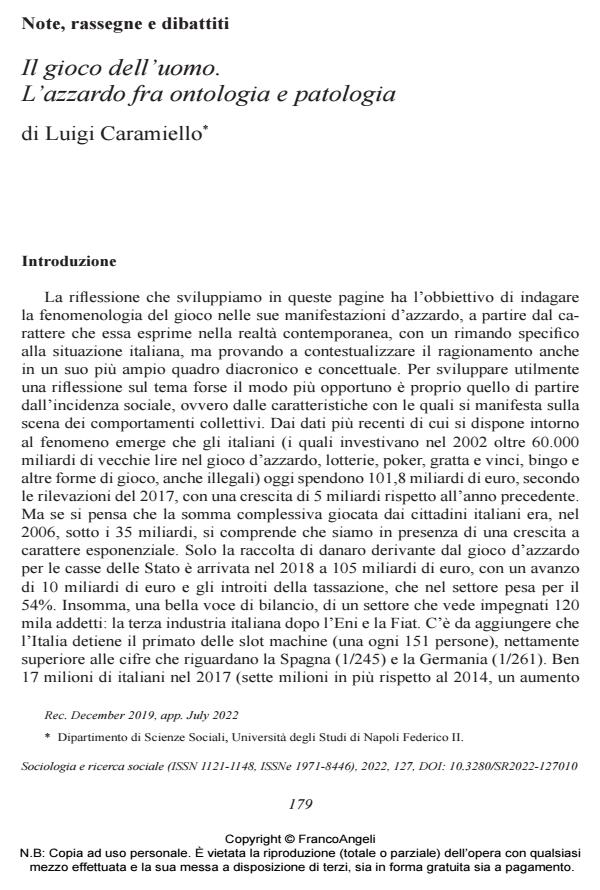The Game of Man. The Gambling between Ontology and Pathology
Journal title SOCIOLOGIA E RICERCA SOCIALE
Author/s Luigi Caramiello
Publishing Year 2022 Issue 2022/127
Language Italian Pages 14 P. 179-192 File size 194 KB
DOI 10.3280/SR2022-127010
DOI is like a bar code for intellectual property: to have more infomation
click here
Below, you can see the article first page
If you want to buy this article in PDF format, you can do it, following the instructions to buy download credits

FrancoAngeli is member of Publishers International Linking Association, Inc (PILA), a not-for-profit association which run the CrossRef service enabling links to and from online scholarly content.
Gambling is a specific feature of playing, an ontological modality in the evolu- tion of Sapiens’ behavior. Sometimes it can manifest itself as a vice, a pathological «addiction».Today in Italy there is an emergency in this sense. Still, popular forms of gambling are promoted by the state and constitute important incomes. While ludopathy is classified as a real disease. But can we identify it like this without relating it to the player’s conditions? For an individual who has great resources, it can be a luxury, for a person who is in disadvantaged conditions it reveals itself as a serious and dangerous tendency. It is a question of reasonableness and measure. However, can the right to hope be denied? It is a difficult issue, a multidimensional, ambiguous phenomenon, to be investigated with a multidisciplinary and complex conceptual instrumentation.
Luigi Caramiello, Il gioco dell’uomo. L’azzardo fra ontologia e patologia in "SOCIOLOGIA E RICERCA SOCIALE " 127/2022, pp 179-192, DOI: 10.3280/SR2022-127010